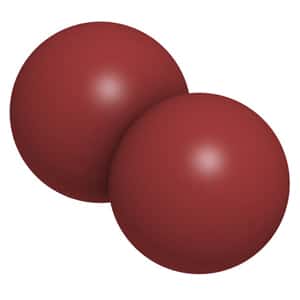
How It’s Used
Bromine is a dark reddish-brown fuming liquid with a pungent odor, its elemental embodiment being a diatomic molecule. The chemical is used in the production of fire retardants; water sanitizer; and certain insecticides. Bromine is also employed in the manufacture of fumigants; dyes; photographic chemicals; and bleaches for fabrics. Further uses include brominated vegetable oil, as an emulsifier in soft drinks; and the production of chemical warfare agents.
The bromides of calcium, sodium, and zinc form dense solutions in water that are used as drilling fluids. Various historical medical and veterinary uses of bromine (such as its inclusion in Bromo-Seltzer) have long since fallen out of favor.
Occupational Health/Toxicology
Exposure to bromine is most often a result of accidental spills or leaks during transportation or manufacturing operations. Bromine vapors can cause acute as well as chronic poisoning. The chemical is irritating to the eyes and respiratory tract. It should be noted that more severe respiratory symptoms may be delayed for several hours after the exposure.
Poisoning is due to the corrosive action on the gastrointestinal tract. Nervous, circulatory and renal disturbances occur after ingestion. Ingestion of liquid can cause death due to circulatory collapse and asphyxiation from swelling of the respiratory tract.
Full record on bromine from Hazardous Substances Data Bank (HSDB), a database provided by the US National Library of Medicine.
The bromine entry from NIOSH’s Pocket Guide to Chemical Hazards.
Monitoring Instrumentation
Check out Interscan’s full line of bromine gas detection/gas monitoring instrumentation.
